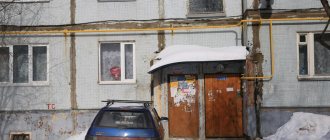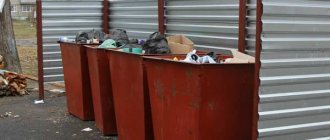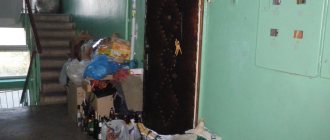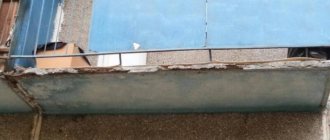It's good when the fire burns in our souls, and not in the house. In recent years, the topic of fire protection has become more complex and functional.
To create a safe living environment, it is not enough to install a good ventilation system and smoke removal sensors. New realities require the development of a fire-fighting multi-level integrated complex.
We are talking about APPP: what is it in housing and communal services? The abbreviation is explained as follows: automated fire protection. This system is designed to prevent fires in residential areas. Protection in the “automatic” mode is especially necessary in apartment buildings of 10 or more floors.
In this article we will talk about what is included in the concept of an APP, what tasks it performs, what types there are, whether we should pay for this column of the receipt, what will happen if we do not pay, how the APP is repaired.
Automatic fire protection equipment (AFP) in an apartment building
It's good when the fire burns in our souls, and not in the house.
In recent years, the topic of fire protection has become more complex and functional. To create a safe living environment, it is not enough to install a good ventilation system and smoke removal sensors. New realities require the development of a fire-fighting multi-level integrated complex. We are talking about APPP: what is it in housing and communal services? The abbreviation is explained as follows: automated fire protection. This system is designed to prevent fires in residential areas. Protection in the “automatic” mode is especially necessary in apartment buildings of 10 or more floors.
In this article we will talk about what is included in the concept of an APP, what tasks it performs, what types there are, whether we should pay for this column of the receipt, what will happen if we do not pay, how the APP is repaired.
Decoding of utility bills for housing and communal services, which is included in the rent receipt
They are quite understandable to workers in the housing and communal services sector.
However, owners and tenants have a question about how to read the housing and communal services receipt. Moreover, different organizations may use their own abbreviations.
At the same time, there is a certain generally accepted abbreviation for payment for the maintenance of apartments and utility bills (HVS, DHW, DHW ODN, HVS ODN, ODN, VDGO, etc.).
Most of the data on the receipt is presented in table form. Each line indicates a separate type of service, including its name, tariff, standard, volume consumed, payment amount.
Next, let's look at how each of them is deciphered.
An abbreviation such as ODN is often found on receipts. Let's take a closer look at this ODN, which is how it is designated in housing and communal services.
This abbreviation stands for very simply: general house needs. Living in an apartment building, the homeowner uses not only his premises, but also the property common to the entire house.
Moreover, he owns a share in this property and is obliged to bear the costs of its maintenance.
Let's look at how this is calculated for each tenant. Everything is very simple, the payment amount is calculated based on the area of the premises occupied by a particular person. What is included in the ODN according to current legislation? In fact, we are talking about the costs of maintaining the common property of the house. And it includes cleaning of entrances, their lighting and heating, elevator maintenance and other measures to maintain its normal condition.
Read if you want to know more: . In 2021 (the rule was introduced in 2017), the receipts include payments for maintenance at the ODN, including:
Automatic fire protection (AFP)
They fill all rooms of the protected object with water, foam, inert gas, powder or aerosol cloud of fire extinguishing agents; which ensures quick, effective extinguishing of the source of smoldering, fire at the initial stage, while nothing has yet been damaged by the fire, smoke products of the combustion process, significant direct and indirect damage has not been caused to the owners of buildings, the management of enterprises, institutions to which they belong, numerous tenants, which is not uncommon for high-rise buildings; owners of apartments in multi-storey residential buildings.
- Warning systems, management of the evacuation of people, without which today it is impossible to properly, without unrest and panic of visitors/customers, organize them for a quick exit to fresh air from buildings and structures where a fire was discovered.
- Smoke protection systems, including not only equipment for smoke removal and air pressurization units; but organizational measures that allow the prompt and safe evacuation of all people, without exception, in the building at the time of the emergency - from the outbreak of a fire to an accident on utility networks, communications, using evacuation routes and exits that are not smoked by toxic combustion products.
- Blocking of control and reception devices for automatic fire alarms, control and monitoring equipment of stationary installations/fire extinguishing systems with engineering systems, communications of the building, whose
We recommend reading: Light beatings with loss of ability to work
The concept of APPP and its components
The increase in the number of construction projects and multi-storey residential complexes leads to the need to create reliable automated fire protection (AFP), which will protect the lives and property of citizens from fires.
The main requirements for the protection system are determined by the timely detection of outbreaks, control of elevators, ventilation, valves to prevent the spread of fire, warning elements and evacuation flows.
Automated fire protection design is an important part of system development. In this context, the fire protection system is a set of interconnected engineering and technical means to ensure fire safety (FS) of objects in automatic mode.
In accordance with industrial safety standards, buildings and apartment buildings must be equipped with APPS systems. It includes:
- systems of fire curtains and barriers - equipment that allows you to determine the location of the fire;
- SOUE (warning and evacuation control system) - warning elements for organizing evacuation;
- fire pipelines - through them fire extinguishing materials are supplied to the place of fire;
- OPS (security and fire alarm) - means for generating control signals for starting and monitoring equipment;
- smoke removal system - a set of tools for creating safe conditions for removing people from a burning object;
- AUPT (automatic fire extinguishing control) - elements with the help of which fire extinguishing devices are controlled.
Fire curtain and barrier system
A curtain, or curtain, is a fabric made of fire-resistant material that is used to protect spaces that have not yet become smoke-filled and to localize a fire. To protect evacuation routes, large areas are divided into zones.
Warning and evacuation control system
The purpose of the elements of this system is to inform people who are in the danger zone .
The sound notification is usually a single-tone siren sound. The equipment also includes loudspeakers that allow speech to be reproduced manually or automatically, as well as lighting elements and information signs (“Exit”).
The system allows you to organize the correct evacuation of citizens.
Fire pipelines
The piping network includes internal and external pipes . Internal ones distribute and supply fire extinguishing agents to fire panels and premises. External ones supply water to hydrants located outside the building.
Security and fire alarm
The task of fire alarm systems is to create an alarm signal if signs of fire suddenly appear. The signals are sent to the PKO (reception and control equipment), which is responsible for controlling the entire system.
The space at the facility is controlled by point APIs - autonomous fire detectors, consisting of special sensors that respond to heat and fire. You can signal the presence of an emergency manually by pressing the panic button.
Smoke control systems
Smoke removal elements protect against the effects of combustion products on escape routes .
At the same time, smoke is eliminated, combustion products are removed, oxygen concentration is reduced and clean air is supplied. For this purpose, the supply and exhaust systems of ventilation equipment are switched into active mode. To maintain excess pressure, air flows are injected into stairwells and elevator shafts.
Automatic fire extinguishing control
When the APPZ system enters the “Fire” stage, the APPZ activates extinguishing agents. Today the following types of installations can be used:
Like the SOUE, fire extinguishing control can be carried out manually or automatically - from the main control unit.
Gas installations
This extinguishing method is safe and reliable and is used when extinguishing electronic equipment in enclosed spaces.
The principle of operation of gas agents is to replace oxygen with a gaseous substance - inert gases, inergen, nitrogen, argon . These mixtures have zero electrical conductivity, do not affect people and do not cause material damage.
Water-foam installations
To extinguish flammable liquids and fuels and lubricants, water- and foam-based agents are used .
The moment the system responds to a fire signal, the concentrate will begin to spray through the sprinklers and cover the fire. Modern foaming agents are harmless, easy to clean and chemically neutral.
Water installations
Relevant for crowded places . The extinguishing solution is water and water-foam concentrate. The advantages include harmlessness and easy availability, while disadvantages include electrical conductivity, the influence of low temperatures and the risk of property damage.
Powder plants
This category of fire extinguishing agents is in demand when vehicles and electrical equipment, including those that are energized, catch fire.
The powder is sealed in cylinders, from which dispersion is carried out under the action of gas. Visually, it looks like a cloud of dense smoke that blocks the access of oxygen.
Powder concentrate is also successfully used to extinguish gaseous, solid and liquid substances.
APPP using the example of a high-rise building
A high-rise building is, as a rule, multifunctional buildings, such as shopping and entertainment, business, office centers, and high-rise residential buildings.
Considering the national mentality, few of the workers, residents of such buildings with not only an increased number of storeys, but also a danger to life in the event of a fire or technological emergency, are concerned not only with the acquisition, safety of water, air-foam or carbon dioxide fire extinguishers, personal/ collective self-rescue in case of a fire in the premises; but also the ability to safely leave the building in case of emergency.
Read more about fire extinguishers:
in a separate article at this link
How is APPP managed?
Many electronic modules are connected to each other by wired and wireless low-current networks and form a set of APPPs.
All elements of the system participate in management. They are monitored and controlled from a central post . The post can be supplemented with dispatching means for manual control or triggered automatically.
APPP complexes operate in parallel with other engineering systems at the site and are integrated with access control, video surveillance and security systems. In order for fire services to receive a timely signal, communication networks must be connected.
Despite the complexity and multi-component nature of the fire protection system, it is the best way to protect the building and people from fire, minimize property damage and reduce overall losses from the elements.
Requirements for APPP
In accordance with the technical standards of PPB, the following requirements are imposed on automatic fire protection equipment:
Designing and installing an APPP in an apartment building is a complex and expensive undertaking, which includes combining the installations and all elements into a single complex.
The legislation does not provide for general requirements for the installation of APPP; each individual system has its own requirements. The main thing is to adhere to the basic regulations, rules and methods.
How are APZ systems maintained?
Maintenance of automatic fire protection systems includes a set of procedures aimed at ensuring the uninterrupted operation of the equipment.
As part of this work, the technical condition of all devices is monitored. Responsibility for the maintenance of all automatic systems lies with the company manager.
At least once a quarter, the functionality of automatic fire protection is checked - this is done by inspectors. Based on the results of the inspection, a certificate is issued (if everything is in order), or a certificate of non-compliance is a document indicating all the shortcomings that need to be eliminated within the specified time frame.
To record malfunctions, a special document is kept - a log of fire automatics installation malfunctions. It includes all identified problems with the date of discovery, the cause of the breakdown and the prescribed measures. The log is checked by the fire inspectorate during regular inspections.
Features of APZ repair
In the receipt for utilities you can find the column “Maintenance and repair of the APZ” .
What does this concept include? The fact is that the maintenance and repair of emergency fire protection is a mandatory requirement for apartment buildings, including in 2021. The system has the right to install only a specialized team of trained specialists from among rescuers and employees of organizations licensed by the Ministry of Emergency Situations.
Services of this kind are provided on a paid basis, and therefore management companies redirect proportional amounts to residents’ accounts.
The structure of the APPP includes:
- installation and maintenance of alarm systems;
- installation and maintenance of warning systems;
- design and maintenance of smoke control systems;
- contents of the dispatch service.
In addition to the main items, the payment may include additional services, the scope of which must be previously agreed upon with the residents of the apartment building.
In practice, most often the APPS systems are inoperative, and may even be absent altogether . And the fee for its maintenance and service is exactly billed every month, since the presence of an APP is a mandatory condition by law.
Management company tariff for maintenance and repairs
In many ways, the above rules have public significance when management companies are private individuals engaged in commercial activities. So, in addition to the specified legal acts, they are subject to the requirements of the legislation on business activities, requirements for legal entities, etc.
Thus, the management company, being a business entity, has the right to independently determine tariffs, in agreement with residents, who in this case act as clients of the company.
But at the same time, they are also required to comply with legislation in the field of establishing fees for housing and communal services.
The procedure for determining the management company's tariffs is as follows:
- The management company agrees on the list of services provided to a particular apartment building.
- According to the minimum and maximum tariffs determined by the government and local authorities, the management company agrees with the residents on the cost of services.
- Tariffs are fixed in an agreement between the management company and the general meeting of residents of an apartment building.
Meanwhile, the management company has the right to adjust the cost of tariffs for the maintenance and maintenance of residential buildings during the reporting year or as the plan for the maintenance and repair of the house is implemented, if the cost of certain materials and services on the market increases. So it is quite difficult for residents of apartment buildings to track changes in tariffs that are determined by the Criminal Code.
How to calculate the tariff for the maintenance of an apartment building
So how to do the calculation? To calculate the tariff, it is necessary to take into account the services included in the necessary measures for maintaining the house.
Typically, the following services are included when calculating the tariff:
- water;
- electricity;
- maintenance of gutters;
- technical content;
- contents of the APPP;
- services and works.
The cost of services and work is determined regardless of the acts of state bodies by agreement with organizations providing the necessary services and performing the relevant work. The maintenance and repair of residential premises is calculated both according to the services actually rendered and according to standards.
In turn, the cost of consumed water and electricity is determined according to the tariffs of the supplier, and is calculated based on the readings of metering equipment. If such equipment has not been installed, then the consumption levels are determined in accordance with the standards established by an act of the Government.
How to refuse the service
In fact, residents cannot refuse the service of maintaining and repairing automatic fire protection, since the house in which they live is declared unfit for use.
However, you can require the management company or HOA to recalculate payments, especially if the system is faulty or non-existent.
This is how unscrupulous management companies embezzle funds from residents without providing them with full fire protection .
This is a violation of fire safety legislation, which, accordingly, is fraught with penalties against specific officials and the entire organization as a legal entity. If the management company improperly fulfills its duties, the owners or tenants have the right to even demand material compensation and recalculation of the payment made through the courts. If such a situation occurs, residents can refuse the services of the management company in favor of another company or organize a homeowners’ association.
Logbook for fire alarm installation malfunctions
As with monitoring the regularity and quality of inspections of the technical condition of any fire automatics installations, it is important to properly organize this process with recording of the results of a visual inspection and technical service data in the logbook (); incl. about identified malfunctions that are subject to prompt elimination within the framework of contractual relations with a specialized organization providing this service.
To summarize, I would like to add that despite the presence of fire safety installations/systems, all visitors, spectators, and buyers should not forget about fire safety rules in public places; especially if they came there with children.
The second side of the question about the need and importance of creating APP systems for both designed and operated buildings should be important to property owners, management of organizations, enterprises that are in charge of large facilities in terms of area, number of floors and construction volume; because annual practice with inexorable statistics shows that false alarms are scattered both in management and control, and in technical maintenance by various organizations; instead of one bearing full liability, including material, criminal, they can cause direct and indirect material damage, quite comparable to a major fire.
Fire protection
In the modern world, the fire protection system is becoming more and more complex and multifunctional. For its effective operation, smoke removal and ventilation sensors alone are no longer sufficient. There is an increasing need for the use of a multi-level system, which will be combined into an integral complex to combat fires.
The increase in the number of construction projects and the construction of structures in the form of wholesale megamarkets, large modern hotels, multi-storey densely populated buildings leads to the need for fire protection systems that would optimally protect lives and property from fires.
Let's return to deciphering the APPP. Special requirements for the system in the event of a fire will be determined by the timely detection of sources, a huge set of ways to control ventilation, valves to delay the spread of fire, elevators, a warning system and control of evacuation flows of people.
Fire protection system maintenance
In accordance with the rules and technical documentation for fire extinguishing systems, after their installation and a certain service life, it is necessary to carry out scheduled maintenance (maintenance). Activities are carried out at predetermined dates and are approved by the passport data for the installed equipment. Planned maintenance is carried out by persons who have special qualifications in a particular area and certification licenses for the work performed.
Decoding the APPP is quite simple. This system includes the following components:
- fire alarm;
- warning system and adjustment of evacuation of citizens in case of fire;
- automatic fire extinguishing installations themselves;
- smoke removal systems in case of fire;
- internal water supply lines for fire extinguishing;
- security alarm component;
- visual observation devices;
- management access control system.
What does maintenance of APPP systems (installations) include?
Separate maintenance of all equipment and devices that are part of the Fire Protection Plant is carried out by employees of specialized enterprises providing fire-technical services on the basis of appropriate licenses from the Ministry of Emergency Situations.
In practice, it is desirable that this be one company that has complete information about the technical condition and the nuances of ensuring the operability of the entire fire protection complex of the building.
In existing/operating high-rise buildings of large construction volume, we would like to recommend that their owners, heads of enterprises, institutions, and organizations enter into contracts for fire safety outsourcing, which in practice relieves headaches by reducing the number of contractors providing such services; and, therefore, reducing the cost of servicing all fire protection systems - from regular checks of fire detectors, automatic alarm systems, fire extinguishing systems, recharging fire extinguishers to proper maintenance of fire extinguishing pumping stations, fire elevators.
Complex of maintenance works
Fire alarm maintenance has a specific scope of work. These are events such as:
- personal inspection of all sirens;
- visual inspection of control panel elements and other various areas of fire alarm systems;
- inspection of electrical alarm communications and their attachment points;
- checking fuses and connecting contacts;
- inspection of various switches throughout the alarm system;
- work on inspection of indicators based on light and sound;
- control check of fire alarm software;
- inspection of grounding, and, if necessary, its mandatory restoration;
- inspection of the main and additional power supply units (it must be remembered that this type of work should only occur when the voltage is turned off);
- checking sensors and the entire alarm system in general using a fire drill;
- checking insulating layers of various levels of fire protection;
- thematic work on personnel training.
If damage is detected or if necessary, all parts of the fire alarm with defects must be replaced with functional units as soon as possible and in compliance with all standards and requirements of technical documentation.
APPP priorities
The primary task of fire protection systems is to determine the location of the fire. Next, automated protection uses all the necessary signals to trigger fire protection measures at the controlled facility. What does it mean? This implies the activation of sensors to remove smoke. In this case, the ventilation system in the general exchange is de-energized. Processes are beginning to preserve and prevent the spread of air in elevator shafts and stairwells, to block fire dampers and doors, and to activate all currently required automated fire extinguishing devices.
Also, certain elements of the system notify the responsible personnel who are on duty about a fire incident in the controlled area. In addition, information is communicated to all people at the hazardous site.
Most of the time, automated fire protection systems are in an operating mode in which all previously described actions are not accepted by the system for execution. The fire alarm in this case (in standby mode) reduces all false signals to a minimum, thereby preventing material losses. Now you know the decoding of the APPP.
Appz what is this in housing and communal services
Automated fire protection includes: OPS - a set of tools that generate a control signal for monitoring and starting equipment;
- Systems of fire barriers and curtains - localization of fire sources;
- Smoke removal systems - ensuring safe conditions during evacuation;
- External and internal fire pipeline - supply of fire extinguishing materials to the fire site.
- AUPT - control of fire extinguishing means;
- SOUE - sound notification and activation of evacuation means;
The task of the alarm system is to generate an alarm signal if signs of fire are detected. The signal is sent to the receiving and control equipment, which controls the entire protection complex.
Space control in the premises is carried out using point fire detectors (smoke sensors and heat sensors).
In the event of an emergency, activation using manual call points (fire alarm buttons) is possible.
Public address systems are designed to inform people in a building that an emergency has occurred. A single-tone signal or siren sound is played as a sound alert. Modern SOUE are equipped with equipment and loudspeakers that allow you to reproduce voice messages automatically or manually.
This makes it possible to correctly evacuate people from the site and, if necessary, organize a public address system.
In addition to sound notification, the system includes light information means.
Installation of APPP in houses
Installation of fire protection systems in residential buildings, dormitories, hotels, cultural and public service premises and other similar places is carried out according to the project. It is developed in advance and approved by all necessary government relevant bodies. Its cost is determined directly for the object being built, which determines the complexity and type of fire protection system. And that is not all. Moreover, the area of the built-up facility and the costs of the amount of material and equipment used are taken into account.
APPP design
The development of the project provides that automatic fire extinguishing installations will simultaneously perform the functions of an automatic alarm system. Fire protection must operate around the clock, have a remote and local starting mode. Substances in the fire extinguishing system must comply with fire safety requirements for buildings and premises, based on the type of production activity and the properties of the materials. Depending on this, fire extinguishing installations can be:
- water type;
- foam type;
- gas;
- powder
Fire alarm maintenance must be carried out on time and by qualified specialists or personnel with proper training.
Installation of fire protection and fire alarm systems
Installation of fire alarms and fire automatic systems is carried out by specialists. First you need to calculate the required number of sirens. To do this, you need to know the height of the room and its area. If the height of the room is more than 3.5 m and the area is more than 80 m², then a siren is needed. According to fire safety regulations, fire protection of the premises must be provided by 2 sensors.
The distance from the sensor to the wall should be 450 cm, the distance between the detectors should be at least 900 cm. Wall-mounted devices in buildings are mounted at a distance of 200 mm from the ceiling. After installing the sensors, they are connected to the power source in series. The resistor is placed in the body of the last detector. Then you need to check the sensors for activation by a candle flame.
Smoke detectors should be installed away from smoking rooms and smoke-filled rooms. In a room whose area is controlled by a detector, the installation of the sensor depends on the height of the ceiling and the area of the room: with an area of up to 15 m², the sensor is installed at a height of 6-9 m, with an area of up to 20 m² - at a height of 3.5-6 m, with an area of up to 25 m² - at a height of 3.5 m. The exact calculation of the installation of automatic control systems PZ is carried out by the designer.
Please open the door
Hello, dear friends. Today we will talk about ROM in housing and communal services - what it is, how maintenance occurs and other issues. ROM stands for intercom and locking device or our usual and familiar intercoms. They are installed on the entrance doors of apartment buildings (Apartment Buildings) and are serviced by a specialized organization, most often the one that installed them.
The question arises: is such a service considered a public service and how much should they pay for it, for example, those residents who refused to install an intercom into their apartment. Let's figure it out.
What does the abbreviation AUR mean on the receipt?
AUR in a payment order is payment for services provided by the management organization for the administrative maintenance of an apartment building. Everyone understands that people don’t work for nothing. The money that apartment owners contribute monthly goes to the salaries of the management, the building manager, accountants, office expenses, maintenance of the current account, payment of telephone bills, maintenance of the special premises occupied by the manager, furniture, provision of technical devices, etc.
The receipt may contain the designation AUR or AHR, this depends on the form of management of the apartment building. If both of these expense lines cost, it is illegal.
What are we paying for?
Article 154 of the Housing Code of the Russian Federation states that rent means payment for maintenance and repair of common property of apartment buildings and utilities. The list of services and maintenance work in accordance with technical regulations and standards for roofs, attics, basements, utilities, load-bearing walls, technical premises, entrances and local areas is approved by the municipal authorities in each region, as are tariffs for all types of work. Only the general meeting of apartment owners and no one else has the right to expand their list.
We'll complain
Utilities include the supply of resources to ensure comfortable living for residents: water, heat, electricity, gas, sewerage and solid waste removal. If you are forced to pay for services that are not provided to you, or to pay for them at inflated rates, you have the right to file a complaint with the housing inspectorate, the prosecutor's office, or go to court.
It is best to start from the first instance by complaining to your management organization, and only if you do not receive an answer, or an answer that does not suit you, can you continue to complain through the authorities.
More services
Many people probably have to pay for so-called additional services. They are varied and there is no limit to the imagination of management organizations: contributions for insurance of common property, payment for a security post or concierge, maintenance of a barrier, intercom, video cameras, and so on. Some pay in silence, others are indignant - and pay again.
It is especially offensive to those residents who do not need these additional services, but have to pay for them. You don’t have a car and minor children - and you don’t need yard security with video cameras and a barrier, you live alone and don’t have guests - it’s as if you don’t need an intercom.
We do everything according to the law
In order to collect fees for additional services not specified in Article 154 of the RF Housing Code, the management organization must make appropriate changes to the trust management agreement, which stipulate the name, quantity, tasks or purposes of the service, and its cost. And only when each of the owners signs this agreement, the service is provided.
That is, if you are against the provision of an additional service, you do not sign the contract or amendments to it, and below write the reason for not agreeing. It must be borne in mind that the Housing Code of the Russian Federation directly states that the issue of providing additional services is not within the competence of the general meeting of owners of apartments in apartment buildings, therefore each owner decides this issue for himself: whether he needs the service or not.
Let's go back to the intercom
You also need to understand that if you refuse to sign an agreement for the provision of an additional service, then 2 scenarios will arise:
- Regardless of your refusal, you will be charged for providing a service you do not need. You can safely go to complain - the action of the management organization violates the law.
- You will not be charged any payment, just like others who refuse, and all costs will be evenly distributed among the other owners of apartments in your building. How you look your neighbors in the eyes is your business.
If you installed an intercom in your apartment, you will have to pay for the maintenance of the intercom in full. Even if you file a complaint against the management company or homeowners association, their management can easily prove that you actually use the service in full. It’s another matter if you refuse to install an intercom into your apartment, then in theory they should sell you the number of magnetic keys you need and forget about you.
But you still have to pay the organization that maintains the intercom once a year, since the intercom, like the antenna on the roof, is a means of notifying citizens about emergency situations. For more detailed information, you can study at your leisure Resolutions of the Government of the Russian Federation No. 307 of May 23, 2006 and No. 491 of August 13, 2006.
You can save money
If your house is not new, and you are just deciding whether you need an intercom, then we advise you to raise money without the participation of a management company or HOA, hire an installation company and that’s it. You won't have to pay for anything anymore. Let's tell you a little secret: if you don't break it with an ax on purpose, then it's a fairly reliable thing that doesn't require additional maintenance. And register it as the property of all residents of the house.
Everyone else who signed an agreement that contains a line about intercom will have to pay. It’s unclear why, but you agreed with this at one time.
Even if you don’t agree with some payment lines on the receipt, pay it in full so you don’t have to deal with recalculations later. Nobody will return the penalty accrued for late payments to you, even if you win the dispute with the management company or the HOA. Otherwise, while you are resolving the issue, you can wait for the bailiffs to arrive.
In Soviet times, there were no intercoms, and anyone could be in the entrance: marginalized people, drunken groups, suspicious individuals. So an intercom is a good barrier for unwanted guests at your entrance.
With this I say goodbye to you. I hope that the topic touched upon is necessary, so subscribe to new articles on our site and give a link to it to your friends and relatives on social networks.
Please open the door
Hello, dear friends. Today we will talk about ROM in housing and communal services - what it is, how maintenance occurs and other issues. ROM stands for intercom and locking device or our usual and familiar intercoms. They are installed on the entrance doors of apartment buildings (Apartment Buildings) and are serviced by a specialized organization, most often the one that installed them.
The question arises: is such a service considered a public service and how much should they pay for it, for example, those residents who refused to install an intercom into their apartment. Let's figure it out.
What are we paying for?
Article 154 of the Housing Code of the Russian Federation states that rent means payment for maintenance and repair of common property of apartment buildings and utilities. The list of services and maintenance work in accordance with technical regulations and standards for roofs, attics, basements, utilities, load-bearing walls, technical premises, entrances and local areas is approved by the municipal authorities in each region, as are tariffs for all types of work. Only the general meeting of apartment owners and no one else has the right to expand their list.
We'll complain
Utilities include the supply of resources to ensure comfortable living for residents: water, heat, electricity, gas, sewerage and solid waste removal. If you are forced to pay for services that are not provided to you, or to pay for them at inflated rates, you have the right to file a complaint with the housing inspectorate, the prosecutor's office, or go to court.
It is best to start from the first instance by complaining to your management organization, and only if you do not receive an answer, or an answer that does not suit you, can you continue to complain through the authorities.
More services
Many people probably have to pay for so-called additional services. They are varied and there is no limit to the imagination of management organizations: contributions for insurance of common property, payment for a security post or concierge, maintenance of a barrier, intercom, video cameras, and so on. Some pay in silence, others are indignant - and pay again.
It is especially offensive to those residents who do not need these additional services, but have to pay for them. You don’t have a car and minor children - and you don’t need yard security with video cameras and a barrier, you live alone and don’t have guests - it’s as if you don’t need an intercom.
Decoding the housing and communal services receipt 2021, how to understand the services and what is included in them
This includes rent, capital and current repairs, housing and communal services, etc.
It is also important to determine the basis on which the total amount payable is formed.
First of all, the formation of payments is influenced by contracts concluded by citizens and government organizations (for example, a social rental agreement).
Particular attention should be paid to regulations adopted in the region on the provision of utility services.
You also need to take into account the tariffs in force in the constituent entity of the Russian Federation. The readings of meters installed in citizens’ apartments are also very important.
In this situation, it is necessary to identify what kind of lease is taking place.
If this is a social rental, then the rent for housing is also included in the communal apartment. In situations where there is a civil lease, the rent is addressed directly to the landlord, and the tenant can actually pay it. These conditions must be specified in the contract. The reverse calculation procedure is also possible.
In the housing and communal services sector, legal regulation includes such legal acts as:
- Housing Code.
- Government decree in the housing and communal services sector.
- Regional legal acts.
- Law on Privatization.
- Private contracts.
- Constitution of the Russian Federation.
It is in these legal documents that tariffs for utility services, the procedure for their payment, the procedure for repaying debt obligations, etc. are reflected.
As a rule, regulation most often occurs at the regional level, so special attention should be paid to the regulatory legal acts of the constituent entity of the Russian Federation.
We do everything according to the law
In order to collect fees for additional services not specified in Article 154 of the RF Housing Code, the management organization must make appropriate changes to the trust management agreement, which stipulate the name, quantity, tasks or purposes of the service, and its cost. And only when each of the owners signs this agreement, the service is provided.
That is, if you are against the provision of an additional service, you do not sign the contract or amendments to it, and below write the reason for not agreeing. It must be borne in mind that the Housing Code of the Russian Federation directly states that the issue of providing additional services is not within the competence of the general meeting of owners of apartments in apartment buildings, therefore each owner decides this issue for himself: whether he needs the service or not.
Let's go back to the intercom
You also need to understand that if you refuse to sign an agreement for the provision of an additional service, then 2 scenarios will arise:
- Regardless of your refusal, you will be charged for providing a service you do not need. You can safely go to complain - the action of the management organization violates the law.
- You will not be charged any payment, just like others who refuse, and all costs will be evenly distributed among the other owners of apartments in your building. How you look your neighbors in the eyes is your business.
If you installed an intercom in your apartment, you will have to pay for the maintenance of the intercom in full. Even if you file a complaint against the management company or homeowners association, their management can easily prove that you actually use the service in full. It’s another matter if you refuse to install an intercom into your apartment, then in theory they should sell you the number of magnetic keys you need and forget about you.
But you still have to pay the organization that maintains the intercom once a year, since the intercom, like the antenna on the roof, is a means of notifying citizens about emergency situations. For more detailed information, you can study at your leisure Resolutions of the Government of the Russian Federation No. 307 of May 23, 2006 and No. 491 of August 13, 2006.
Tariffs for housing maintenance and repairs approved by the Housing Code of the Russian Federation
Payment for the maintenance and repair of residential premises is carried out in accordance with the law. The Housing Code is the main legislative act that establishes the rules for determining the tariff for the maintenance of common property in an apartment building.
Thus, Article 156 of the Housing Code defines the following rules for determining the establishment of tariffs:
- The amounts of payments are determined according to the expenses necessary to maintain the house in accordance with the requirements of the law as part of a particular housing stock.
- Tariff rates in apartment buildings managed by a homeowners association, cooperative or other organization of residents are determined by this organization in accordance with the decision of the residents themselves.
- For apartment buildings where there are no such organizations, tariffs are determined at the annual meeting of owners in the manner established by Article 45 of the Housing Code of the Russian Federation.
- The local government authority or municipal administration has the authority to set minimum tariffs in accordance with the recommendations of the relevant ministry.
- The procedure for change and the grounds for this are established by an act of the Government.
The basic requirements for the maintenance and repair of housing are defined in the Russian Federation Regulation No. 491 dated August 13, 2006. Tariffs must be sufficient to ensure compliance with the requirements specified in this regulatory act.
Methodological recommendations for changing tariffs are determined by Order of the Ministry of Construction of the Russian Federation No. 454/pr dated June 27, 2016. According to these recommendations, the local government should determine tariffs in accordance with the criterion of affordability to citizens, but above the limit determined by an act of the Government.
Thus, determining tariffs is a complex procedure regulated by law. So, responsible individuals and organizations have minimal room for abuse in this matter.









